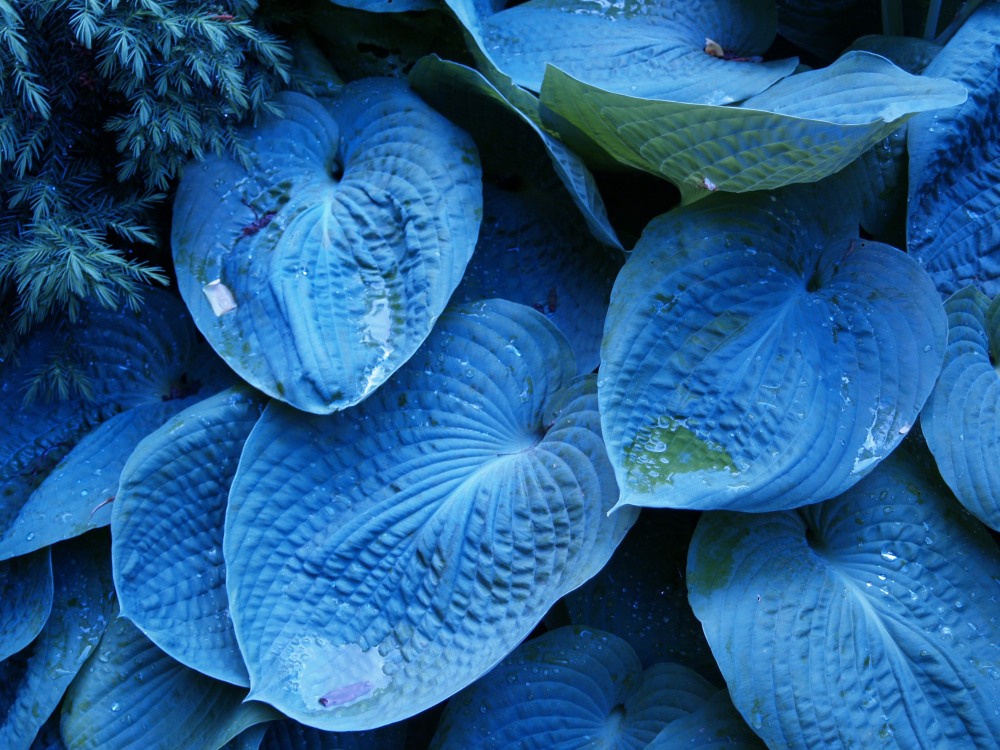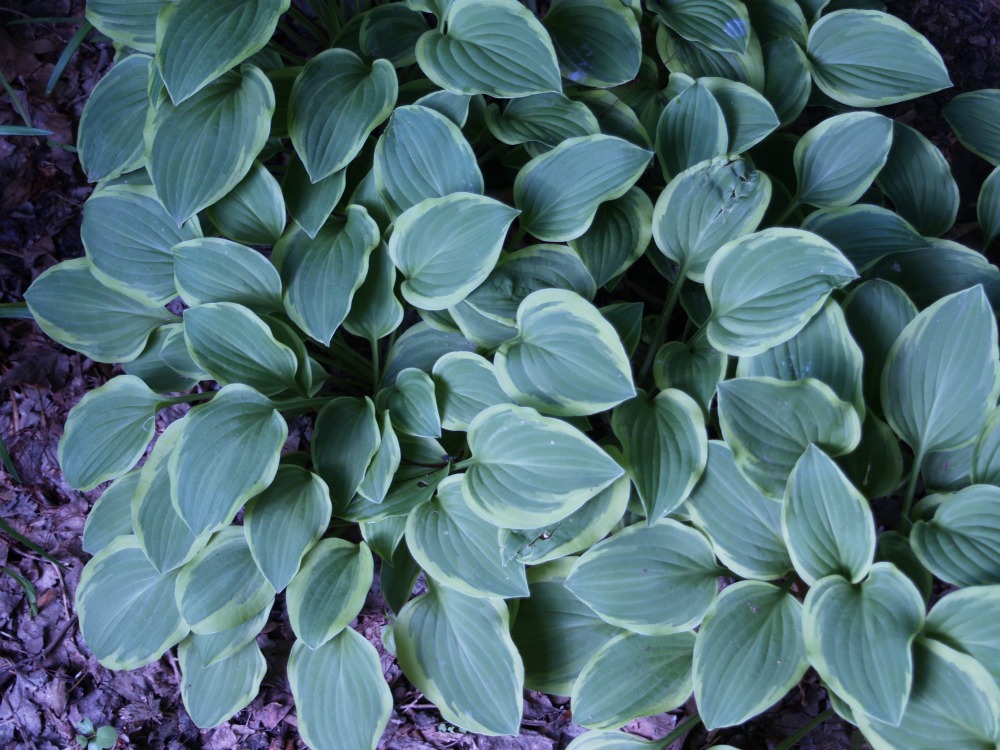In my garden there are collections of dozens of trees, shrubs, perennials, bulbs, and tropicals, though most fewer than ten cultivars each, plenty enough that the garden is nearly beyond my control. Japanese maples, magnolias, redbuds, and dogwoods consume the largest share of space, but hostas are most numerous. A decade ago there were more than a hundred varieties, but deer visited the garden regularly for several years to feast on whatever they fancied at the time, and hostas were their preferred snack.
Now, the numbers have diminished somewhat, but many dozens remain, and since I have set a strict schedule to spray a deer repellent, many hostas that had nearly disappeared have returned. Today we’ll explore some of the sturdier and more striking members of the collection, and with luck I might recall many of their names.
There are many hundreds of hostas available through garden centers, and more through specialty mail order growers, and most are fine plants. I am particularly fond of large leafed hostas, but there are many with splendid variegated colors and blues and yellows, and some diminutive types that are delightful. Most are best suited to the shade garden, but some will tolerate almost full sun, especially if they’re given a break from the heat of the afternoon.
Blooms are a month away for most hostas, and few are selected for their flowers, so today I will address primarily foliage, and there are no leaves grander than those of ‘Sum and Substance’ (above) and ‘Sieboldiana Elegans’ (below). Large leafed hostas seem to be more resistant to deer, and the chartreuse leaves of Sum and Substance can grow to nearly two feet in length, and clumps can reach six feet across, a commanding presence in the the shady garden.
Siebold elegans is a troubling hosta for me, not that there is any bother in growing it, but wherever it is planted the wide spreading growth will block paths and patios, and my wife is forever criticizing its placement. The blue-green puckered leaves are admired by visitors who insist that I must have some “magic formula” to grow leaves so large, but in fact I have done nothing except plant an extraordinary hosta. I also grow other, more up-to-date and “improved” versions that will hold their color and do this-or-that in some manner that is said to be superior, but I have yet to see the need to improve on this oldtimer.
Every year a crop of new and improved hostas is introduced, and many feature variegated leaves, but I think that none is finer than the old favorite ‘Frances Williams’ (above) with large corrugated blue-green leaves with wide yellow margins that make a considerable three foot wide clump. Many hostas are troubled by damage from slugs, but not Frances Williams, so foliage stays fresh looking through the summer.
‘Krossa Regal’ and ‘Halcyon’ (above) are blue leafed hostas with contrasting habits. Halcyon grows much wider than tall with frosty blue-green leaves, while Krossa Regal is similar in leaf color but very upright in habit, a form quite unusual with hostas. There are few better hostas, and no other blues that are superior in my experience.

‘Blue Cadet’ (above) is a vigorous, low growing hosta with blue-green leaves, and along with ‘Golden Tiara’ (below) are two that I have subjected to the worst in hosta torture, planted in a sliver of soil between thirsty maple roots.  Both survive admirably, but given more generous soil and moisture they spread at a moderate pace (quickly for hostas). I have given ‘Allan P. McConnell’ (below) more luxurious accommodations, and this low growing green with narrow white margins spreads steadily to form wide, low clumps, and all are appropriate for growing under taller shrubs and perennials, or even beneath other hostas.
Both survive admirably, but given more generous soil and moisture they spread at a moderate pace (quickly for hostas). I have given ‘Allan P. McConnell’ (below) more luxurious accommodations, and this low growing green with narrow white margins spreads steadily to form wide, low clumps, and all are appropriate for growing under taller shrubs and perennials, or even beneath other hostas.
I’d love to go on further, there are so many outstanding hostas and so little space, and that’s just in my garden. When I was having deer issues I stopped adding new varieties, but there are more great hostas than I’ll ever get around to planting, and if you’re willing to spray regularly to protect your hostas in deer prone areas there are no better perennials for the shady side of your garden.
During the summer, my hostas are frequently plagued by (I think) beetle damage. The damage consists of raggedy holes. Do you know of a solution for this Problem?
It is very likely that the damage you are seeing to hosta leaves is slug damage and not other insects. The only way to stop it is to stop the slugs, and there are a number of ways to capture and kill them, or to prevent them from reaching susceptible plants. To my knowledge very few of the solutions involve poisons, so they are safe for in the presence of pets and children. I have so many hostas, and only some that are bothered by slugs, that I’ve never worried about it. I’m certain that there are many resources on the internet with actual experience who can recommend remedies.
I have had very good success with a product called SLUGGO (non-toxic pellets that basically constipate the slugs to death). I order on-line…many sites available. Sprinkle around hostas early in spring as leaves unfurl and later in summer if needed.
Thanks Sue. I should probably know these things, but I don’t worry about insects unless it’s an invasion of locusts.
Many thanks for all your ideas! Someone else also gave me the idea of crumbling egg shells on the ground under the leaves. Apparently slugs don’t like to crawl over crunchy stuff.
Another great idea! You’re doing all the work for me. I’ve read about and heard about all this, but I’ve not been motivated to do anything about the slimy little critters, so it’s good to hear from someone who does some actual work around the garden. Thanks.